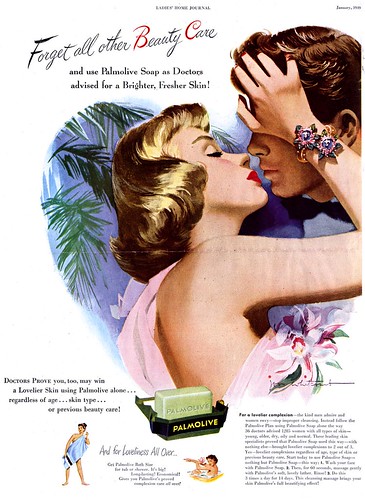

Last week I explained how I would regularily come across two and three pieces by Dorne in a single issue of The Saturday Evening Post from the early 40's. As his presence drops off in late 40's issues of various magazines, only one illustrator can match his numbers: Jon Whitcomb. This is what these two artists have in common... they most effectively interpretted the America in which they lived to reflect the cultural style and values that advertisers felt would sell to the public.
Dorne's America was still a country of small towns and old-fashioned hominess. His work reflects a sensibility of tradition, a slower pace, his people are individuals with distinct visual characteristics and idiosyncracies. But as the Second World War ended, America began a massive paradigm shift. The atom bomb had brought another explosion with it - the baby boom.
 This brave new world was being populated by young , beautiful people of the future - an urban and suburban population that was building a thoroughly modern society based on an instruction manual their parents hadn't had access to: television. Suddenly the cult of celebrity was becoming that much more influential. Youth and beauty and modernity and sophistication were that much more desirable - and Jon Whitcomb had figured out the visual formula for success. For the next decade, as Dorne had done before him, he would set the bar for a slew of imitators.
This brave new world was being populated by young , beautiful people of the future - an urban and suburban population that was building a thoroughly modern society based on an instruction manual their parents hadn't had access to: television. Suddenly the cult of celebrity was becoming that much more influential. Youth and beauty and modernity and sophistication were that much more desirable - and Jon Whitcomb had figured out the visual formula for success. For the next decade, as Dorne had done before him, he would set the bar for a slew of imitators.You'll find all these images at full size in my Jon Whitcomb Flickr set.
Thanks, Neil! I really appreciate that! :-)
ReplyDelete